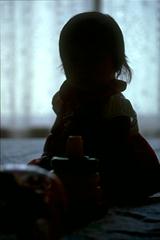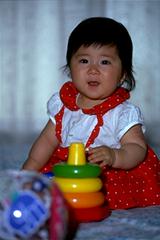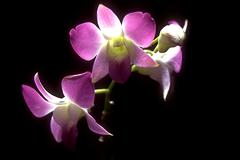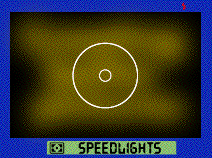Up to now, we've been introducing fundamentals of photography: shutter speed and
aperture functions, the basics of AF cameras, lenses, and on different types of lenses.
Now here are some tips on how to use accessories to take greater advantage of single lens
reflex (SLR) camera capabilities.
Speedlight basics
These days, not only do compact cameras have built-in speedlights. SLR cameras do, too.
Advances in technology have made speedlights and cameras easier to use, eliminating the
need for flash output measurement prior to taking pictures.
|
| Application |
Effect |
| Indoors |
Since the flash achieves effects similar to those of sunlight, it keeps color looking
natural for scenes illuminated by incandescent, fluorescent, or mercury lamps. |
| Subject in daylight |
Facial expressions look alive thanks to "catch lighting" that retains the
sparkle in subjects' eyes. |
| Backlit subject |
A person standing in front of a room window won't be underexposed, as "catch
light" makes the subject look brighter, effectively reducing the light contrast
between subject and background. |
| Cloudy and rainy weather |
Addition of moderate contrast livens up what would ordinarily appear as a
low-contrast, somewhat dull exposure. |

without speedlight
|

with speedlight
|
Guide Number (GN)
This refers to a speedlight's light output amount. The larger the value, the larger the
light output, the longer the light's reach.
GN is measured by multiplying the aperture value by the shooting distance. This is
standard when using ISO 100 film.
GN and possible shooting distance
GN = aperture value x shooting distance *ISO 100 standard
[Example]
Up to how far from a subject could a GN 36 speedlight be in order for a bright picture
to be taken?
36 = f/4 (aperture value) x 9m
(116 = f/4 (aperture value) x 29 ft)
How about a GN 14 speedlight?
14 = f/4 x about 3m
(44 = f/4 x about 11 ft)
Therefore, given the same aperture value, a higher-GN speedlight outputs light having
greater reach.
|
 |
Things to watch out for
Remember your speedlight's GN, so you can determine the limit of the light's reach.
A single lens reflex (SLR) camera's built-in speedlight is usually around GN 14 ~ 15 (44 ~
55*).
Some cameras have a built-in GN 20 ( 66*) speedlight.
A compact camera speedlight is usually around GN 10 (33*).
(* GN measured in feet) |
How close can you get when taking a picture using a speedlight?
You know that the light's reach varies according to GN. But how close can you get using a
speedlight? The answer is about 60 centimeters (24 inches).
If you get closer to the subject, the center of the lens and the center of the flashing
area of a speedlight will not coincide This will have a vignetting effect on the top
portion of the picture, and the picture will appear dark.
Thus, when using a speedlight at a shooting distance closer than 60 centimeters (24
inches) from the subject, use a remote cord and keep the speedlight away from the camera
while taking the picture.
| [Shooting distance: 30cm] |
 |
 |
Taken with a speedlight attached to a camera
|
Taken keeping the speedlight away from the camera
|
Film speed and GN
GN measurement in catalogs and user's manuals is for film speed of ISO 100.
Using higher-speed film such as ISO 400 will have an effect similar to using a high-GN
speedlight.
 |
[Example]
A speedlight with GN 14, using ISO 400 film
Equation: New GN = GN x  (ISO/100) (ISO/100)
New GN = 14 x  (400/100) = 28 (400/100) = 28
Thus, using GN 14 speedlight with ISO 400 film is equivalent to using a GN 28 speedlight
with ISO 100 film. |
When using a speedlight with dark (larger f-number) lenses, or with a zoom compact
camera, use of ISO 400 color film is recommended. |

![]()
